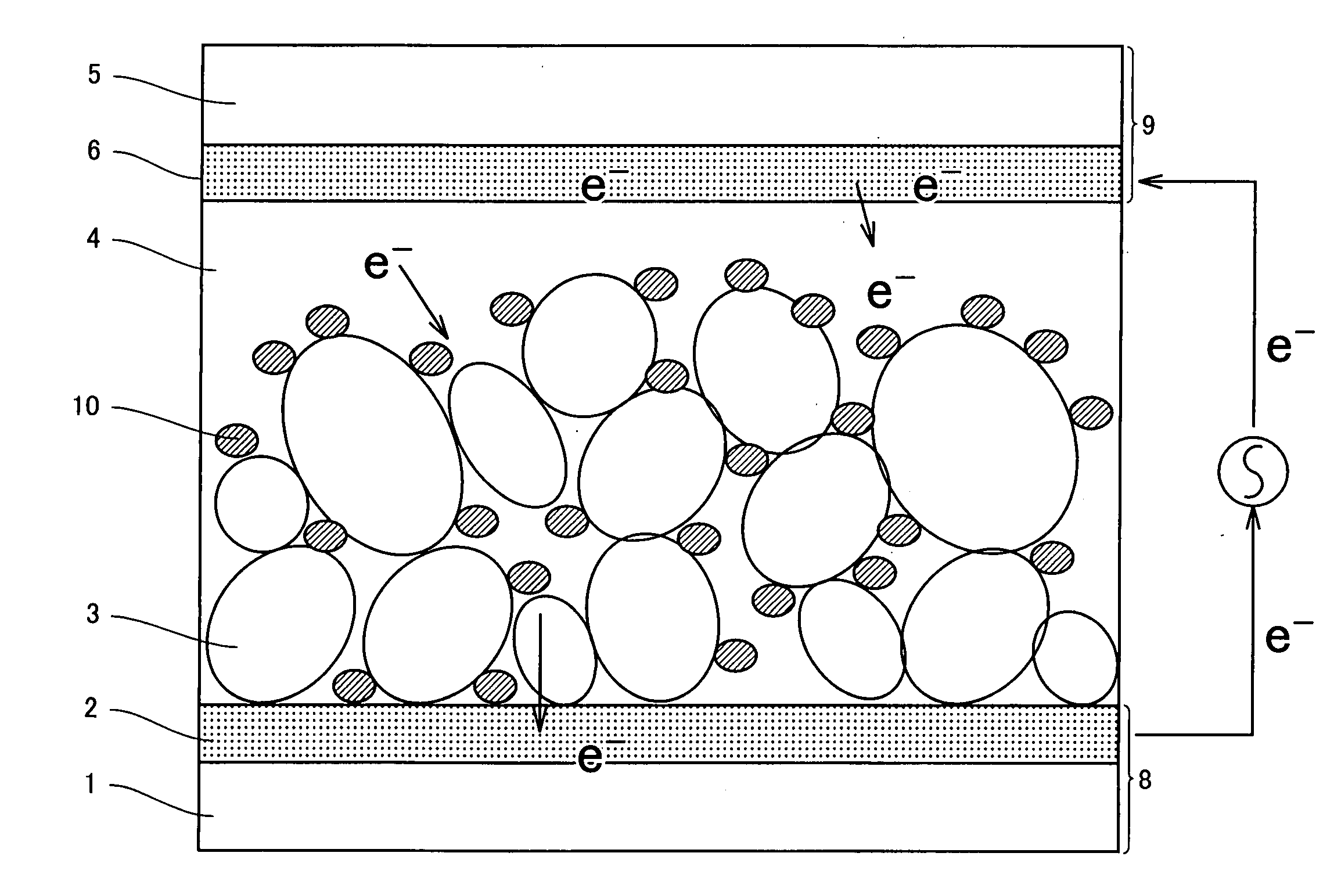Photosensitizing transition metal complex containing quaterpyridine and photovoltaic cell with the metal complex
a transition metal and metal complex technology, applied in the direction of ruthenium organic compounds, iron organic compounds, electrolytic capacitors, etc., can solve problems such as challenging tasks, and achieve the effect of improving the efficiency, durability and stability of dye sensitization
- Summary
- Abstract
- Description
- Claims
- Application Information
AI Technical Summary
Benefits of technology
Problems solved by technology
Method used
Image
Examples
example 1
Preparation of 4,4′-Diethoxycarbonyl-4″(hexadecyl)-4′″(nonadecyl)-2,2′:6′,2″:6″,2′″-quaterpyridine, a Compound of formula (II1)
[0031]
(a) Preparation of 2-Tributylstannyl-picolines.
[0032] To 2-bromo-picoline (28.4 g, 165 mmol) in absolute TH (250 mL) at −78° C. was added dropwise n-butyllithium (110 mL, 178 mmol, 1.6 M in hexane). After the solution was stirred at −78° C. for 90 min, tributyltinchloride (53.6 mL, 198 mmol) was added, and the mixture was allowed to warm to room temperature. Water (90 mL) was poured into the reaction mixture, and the phases were separated. The aqueous layer was extracted with diethyl ether (4×200 mL). The combined organic phases were dried over Na2SO4, and the solvent was removed in vacuo. The resulting oil was purified by fractionated Kugelrohr distillation, colorless liquid, bp 120° C. (2.5×10−5 mbar); Yield: 60%. Anal. C18H33NSn: calcd C, 56.56; H, 8.64; N, 3.67; found C, 56.22; H, 8.70; N, 3.21. MS (ESIMS): m / z: 383.2.
(b) Preparation of 2,6-Di...
example 2
Preparation of 4,4′-Diethoxycarbonyl-4″(hexadecyl)- 4′″(didodecylmethyl)-2,2′:6′,2″:6″,2′″-quaterpyridine, a Compound of formula (II2)
[0049]
(a) Preparation of 4-( didodecylmethyl)pyridine:
[0050] A solution of butyllithium (1.6 M in hexane; 2.05 equiv.) was added to a solution of diisopropylamine (0.2 M; 2.1 equiv.) in dry ether at −15° C. After stirring for 30 min, freshly distilled 4-methylpyridine (1 eqiv.) was added dropwise. The resulting red solution was stirred for 15 min at −15° C. and then a solution of alkyl halide (1 M; 2.05 equiv.) in dry ether was added in one portion. The mixture was stirred overnight at room temperature. Ether was added and the reaction mixture washed twice with 1 M NH4Cl solution, dried with Na2SO4 and evaporated to dryness. The product was purified by chromatography on Al2O3 (neutral), gradient elution with hexane and finally hexane / ether (5:1) gave the product in 70%. Anal. C30H55N: calcd C, 83.84; H, 12.90; N, 3.26; found C, 83.55; H, 12.84; N, ...
example 3
Preparation of 4-Ethoxycarbonyl-4′,4″-bis(hexadecyl)-4′″-nonadecyl-2,2′:6′,2″:6″,2′″- quaterpyridine, a Compound of formula (II3)
[0059]
(a) Preparation of 6-tributylstannyl-4-hexadecyl-4′-nonadecyl-2,2′-bipyridine
[0060] This compound was prepared by an analogous procedure to that described in Example 1 (step g-p).
(b) Preparation of 2,6-dibromo-4-hexadecyl-pyridine
[0061] This compound was prepared by an analogous procedure to that described in Example 1 (step g-j).
(c) Preparation of 2-Bromo-4-carboxy-pyridine
[0062] This compound was prepared by an analogous procedure to that described in Example 1 (step e). Yield: 88%. Anal. Calcd for C6H4BrNO2: C, 35.67; H, 2.00; N, 6.93; Found: C, 35.75; H, 2.03; N, 6.90. MS (ESIMS): m / z: 200.9425.
(d) Preparation of 2-Bromo-4-etoxycarbonyl-pyridine
[0063] This compound was prepared by an analogous procedure to that described in Example 1 (step f). Yield: 90%. Anal. Calcd for C8H8BrNO2: C, 41.77; H, 3.50; N, 6.09;. Found: C, 41.87; H, 3.45...
PUM
| Property | Measurement | Unit |
|---|---|---|
| particle diameter | aaaaa | aaaaa |
| particle diameter | aaaaa | aaaaa |
| specific surface area | aaaaa | aaaaa |
Abstract
Description
Claims
Application Information
 Login to View More
Login to View More - R&D
- Intellectual Property
- Life Sciences
- Materials
- Tech Scout
- Unparalleled Data Quality
- Higher Quality Content
- 60% Fewer Hallucinations
Browse by: Latest US Patents, China's latest patents, Technical Efficacy Thesaurus, Application Domain, Technology Topic, Popular Technical Reports.
© 2025 PatSnap. All rights reserved.Legal|Privacy policy|Modern Slavery Act Transparency Statement|Sitemap|About US| Contact US: help@patsnap.com



